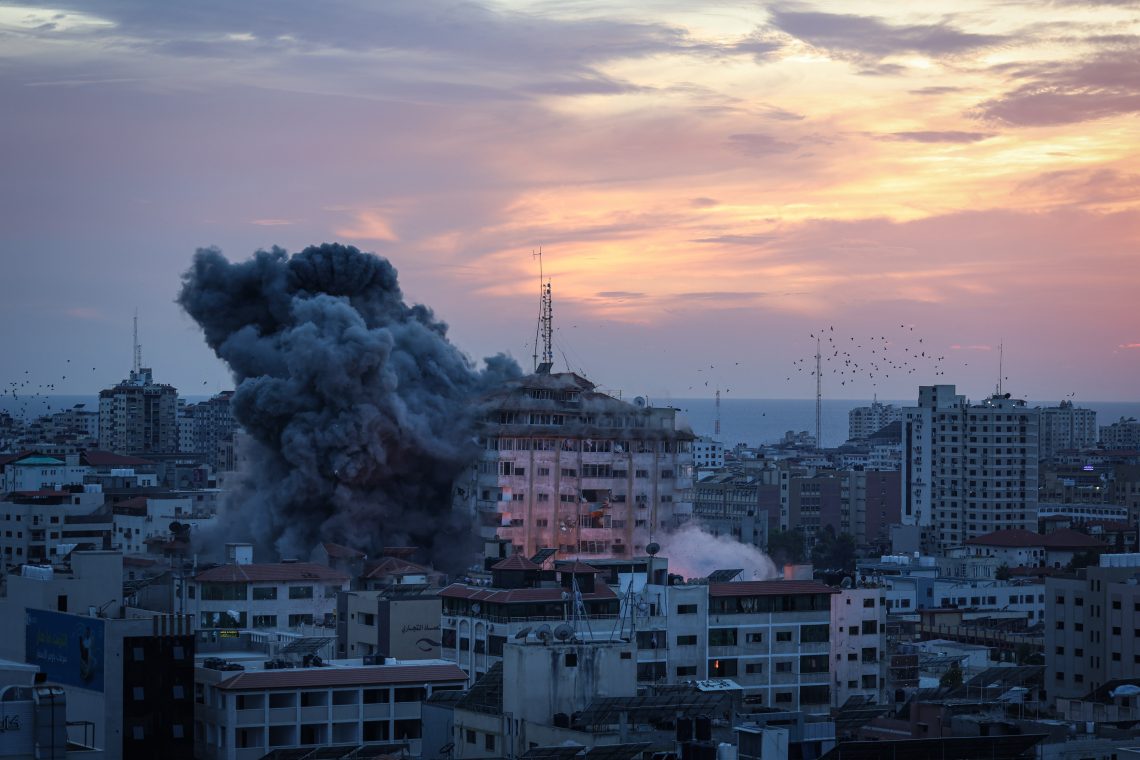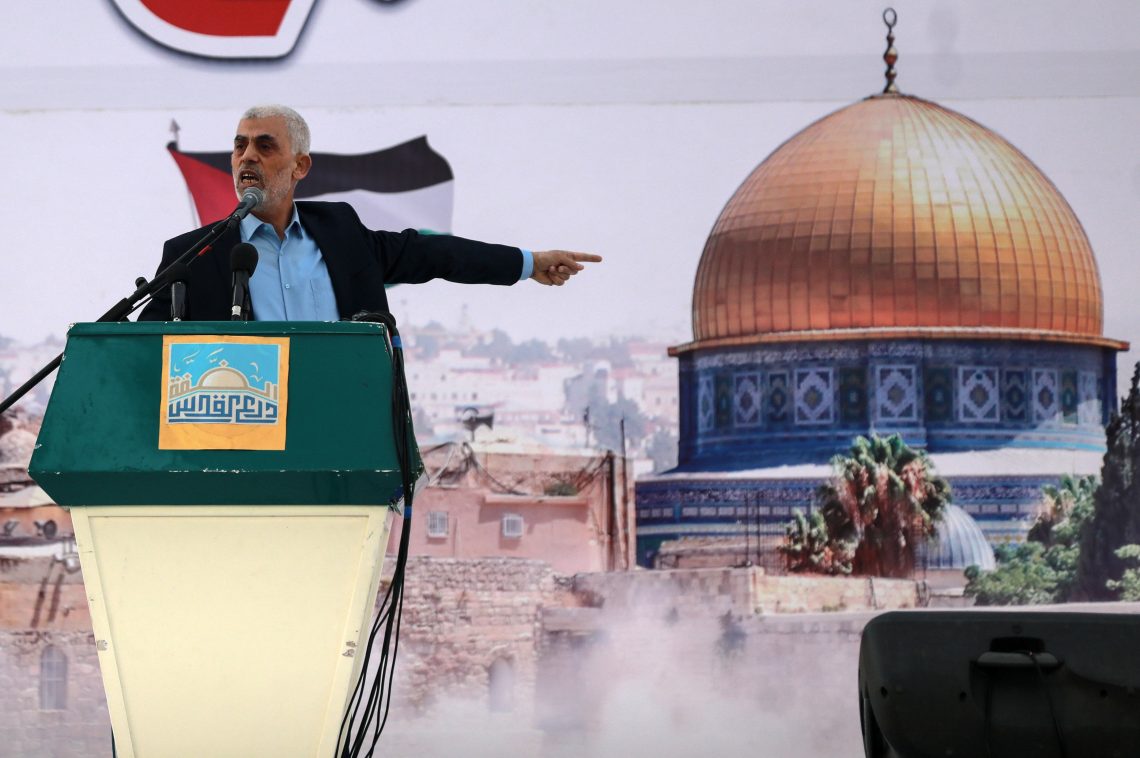Behind Israel’s momentous failure
Israeli leaders grew complacent about security near Gaza, were distracted by internal issues and underestimated Hamas’s violent ideology.

In a nutshell
- Israeli military intelligence relied too much on technology
- Iran saw a moment of geopolitical opportunity
- All political sides in Israel were wrong about Hamas
Israel is still reeling from a devastating surprise attack launched by a much inferior military force. It came 50 years and one day after Israel suffered the most disastrous attack in its history thus far, on October 6, 1973, when a coalition of Arab nations nearly brought the Jewish state to its knees on the Yom Kippur holiday. That war ended with an Israeli victory, 100 kilometers from Cairo and 35 kilometers from Damascus, but it has been etched in Israeli memory as a tragedy and a Pyrrhic victory.
The Simchat Torah attack of October 7, 2023, was even more catastrophic. In the Yom Kippur War, Israel faced a bitter military confrontation around the Suez Canal, hundreds of kilometers away from its borders. Even in the Golan Heights, a far smaller buffer zone than the Sinai Desert, there was room for military maneuvers and all civilians managed to evacuate in time.
Hamas’s surprise assault hit Israel in its soft underbelly, the civilian population living near the Gaza Strip. Unlike 1973, when the country was fully united behind its political leadership, today’s Israel is divided over Prime Minister Benjamin Netanyahu’s profound constitutional changes that half the public believes would establish a dictatorship.
Hamas’s threats to destroy Israel have never been a secret; they have been written openly at the heart of its covenant. The brutal murder at the hands of its fighters of over 1,800 Israelis and counting – including hundreds of women, children and elderly – and the kidnapping of nearly two hundred more now lie like a pall of darkness over the whole country.
Why now?
Several factors combined to create a perfect storm for Hamas to strike now and deliver a devastating blow.
Technology
Since December 2021, when Israel completed an electronic fence and an underground barrier that effectively prevented Hamas from digging tunnels into Israeli territory, the terror group began working on ways to overcome this limitation. It became clear that any activities would have to be taken above ground and by sea.
Hamas was encouraged by shifting Israeli national priorities that led its security planners to rely heavily on electronic surveillance and remote-controlled weapons at the expense of boots on the ground and the human eye. Israel’s entire defense system became far too reliant on technology. Just as, 50 years ago, Egyptian intelligence carefully learned Israel’s military modus operandi, so did Hamas.
With Iranian guidance, the Palestinian terror group devised ways to blind Israeli surveillance and the communications necessary for command-and-control systems. Israel’s Gaza Division command post was cut off, leaving individual units to act on their own. During the first hours, its helicopter gunships’ pilots were receiving their instructions via personal cellphones. Meanwhile, many soldiers had been sent home for the Jewish holiday. All this helps explain the long hours during which unarmed civilians were left to be slaughtered, one residence at a time.
Complacency
Another factor parallels the Yom Kippur War: Just as in 1973, Israeli hubris resulted in complacency. IDF intelligence and the Shin Bet security service studied the enemy’s plans and training. Yet, due to a conceptual mistake, coupled with an overreliance on technology and political pressure to shift their priorities to the West Bank, the military command downplayed the danger from Gaza.
Distraction
Due to the influence of West Bank settlers on the priorities of Prime Minister Netanyahu – whose ruling coalition depends on their political bloc – the main security emphasis since the beginning of 2023 has been on protecting those settlers against Palestinian terrorism. This protection is essential, but it has not always been managed rationally. In many cases, the taking of unreasonable risks necessitated outsize resources.
This happened, for example, when more than an entire regular battalion was recently needed to secure 150 people who insisted on praying amid heightened tensions at the traditional Jewish site of Joseph’s Tomb, in the Palestinian West Bank city of Nablus. On October 6 and 7, the Israel Defense Forces (IDF) were pressed into protecting a sukkah (a temporary hut for the Sukkot holiday) provocatively set up by Jewish settlers in the flashpoint Palestinian village of Huwara. This meant sending an unprecedented number of regular, well-trained troops to the West Bank. While this by itself did not affect the first line of soldiers positioned around the Gaza Strip, it reduced the forces positioned behind it as a strategic reserve.

Judicial reform
Since January 2023, just after Mr. Netanyahu’s coalition came to power, Israel has been divided over his government’s proposed constitutional revolution. This has very seriously affected the Israeli military. It started with fighter pilots in the reserve forces announcing that they would no longer volunteer to serve, in protest of the controversial judicial reform plan, and it later spread throughout the military reserves and began gnawing at regular forces.
When the IDF chief of staff demanded to meet the prime minister to warn him about the deterioration of military preparedness and morale, he was turned down. Since last spring, Arab and Iranian media have been reporting a slow-motion disintegration of the Israeli military and society. These reports were greatly exaggerated, but the impression in Gaza, Beirut and Tehran was that the IDF was melting away, and that Israel’s end is near.
Jerusalem
During the seven-day Sukkot festival, a large number of Israeli citizens came to visit the Temple Mount in Jerusalem, a site also venerated by Muslims as the Al-Aqsa compound. This has been happening every year since 1967, but this time Hamas effectively played it up, casting the visits as a breach of the status quo and as an attempt by Jewish settlers to destroy Al-Aqsa. History has taught us that, since 1928, Islamic propaganda accusing the Jews of attempts to rebuild King Solomon’s temple on the ruins of the holy mosque rarely fails to arouse strong feelings among believers.
Iran
Since the Russian invasion of Ukraine, Iran’s strategic position has been greatly strengthened. Tehran has received critical Russian strategic support in exchange for Iranian military supplies for the war in Ukraine. Then came its emerging rapprochement with Saudi Arabia and the Gulf Arab states, motivated by their fear that the United States was abandoning the Middle East. The Biden administration’s response was to send extra troops to the Gulf region – and, more importantly, to broker a normalization agreement between Israel and Saudi Arabia.
The Iranians became disillusioned about their new romance with the Gulf states, as it did not seem to go any further than diplomatic gestures. They also grew very concerned about the impending Israeli-Saudi agreement. Looking for a way to disrupt it, a war between Israel and Hamas would seem like a stroke of genius. They must have also hoped that West Bank Palestinians, and maybe even Israeli Arabs, would join the fray. It would have been obvious that an Israeli retaliation would be painful. However, they were ready to fight Israel to the last Sunni Palestinian Arab. The crucial question now is: are they also ready to fight Israel to the last Shiite Arab – the last Hezbollah and Iraqi militia fighter?
Hamas
Hamas’s leadership, too, was fully aware that such a brutal attack would punish the residents of Gaza with a painful Israeli response. However, provided that their own families were safe, the terror group’s officials have always been ready to sacrifice their own people on the altar of an anti-Israel, anti-Jewish ideology. When an opportunity offered itself, even the less adventurous elements of the Hamas brass could not help themselves. They may also have started to believe their own propaganda that Israeli society was nearing a collapse. In this telling, delivering a humiliation to Israel – including the torture, rape and indiscriminate murder of children, women and the elderly – could finish the job, and prompt Israelis to begin leaving the country in fear and despair.
Read more on Iran from Amatzia Baram
Breaking away from Iran (Part 1): Lebanon
Breaking away from Iran (Part 2): Iraq
Israel’s conceptual blunder
Here we come to Israel’s main blunder. Until October 7, practically all Israeli analysts, strategic planners and politicians on both sides of the spectrum believed that Hamas was capable of moderation. Successive Israeli governments allowed Hamas to receive hundreds of millions of dollars in cash from Qatar, overlooking that much of this was used to strengthen the terror group itself. They also allowed some 17,000 workers to cross the border every day. These workers were paid standard Israeli salaries by kibbutzim near the Gaza Strip, but some also managed to provide Hamas with accurate information on targets there, while some even participated in the attack.
Israel allowed Hamas to import most of what it wanted, including large quantities of cement, which they used mainly for fortifications and underground tunnels. Israel provided Gaza with some 10 percent of the water its population needed, as well as much of the electricity and almost all the fuel. Israeli entrepreneurs had established at least two high-tech factories in Gaza in the hope that Hamas-controlled Gaza would someday become like Singapore. Almost all Israeli observers saw Hamas incrementally becoming a house cat, only to realize on October 7 that it remained an Islamist tiger.
But there is a crucial difference between Israel’s political right and its left and center. The latter have accepted the concept of a Palestinian state as a plausible option if security arrangements were watertight. They prefer to leave this option open, even if it does not look promising now. This has led the center and left to oppose the annexation of West Bank and, among some elements, even to demand that no more settlements be established.
This position also implies that extending the rule of the Palestinian Authority (PA) over the Gaza Strip is a possibility. This segment of the Israeli polity supported every concession to Hamas – neither to compete with the PA nor to divide the Palestinian public, but out of a belief that Hamas could evolve. Perhaps, they thought, it could eventually join a peace process, or at least permanently cease bombarding Israel with rockets every few months. They believed that Hamas would eventually settle for improving the lives of Palestinians in Gaza.

The Israeli political right saw it very differently, but with the same results. For Mr. Netanyahu and the right, weakening the PA and strengthening Hamas was a way to make a future Palestinian state impossible. Gaza and the West Bank would always be ruled by bitter enemies, too divided to succeed.
But they, too, believed that Hamas could be tamed. They also saw Hamas as an asset because its ideology is so extreme that no Western power could ever support them. On the one hand, the right believed that Hamas was less dangerous than it seemed; and on the other, that its Islamist ideology was so radical as to wreck international support for Palestinian statehood.
This explains how, in 2015, Bezalel Smotrich – then a far-right opposition lawmaker and today Minister of Finance and czar of Civil Administration in the West Bank – could declare that, while the PA is “a burden” to Israel, Hamas is “an asset.” It also explains Prime Minister Netanyahu’s yearslong policy of undermining the government of PA President Mahmoud Abbas and lifting up its rivals in Gaza. As he put it to a Likud party meeting in March 2019: “Anyone who wants to thwart the establishment of a Palestinian state has to support bolstering Hamas and transferring money to Hamas.” In contrast, while the one-year “change” government of Naftali Bennett, Yair Lapid and Benny Gantz accelerated economic support for the Hamas-run Gaza Strip, they also supported the Palestinian Authority.
The scorpion and the frog
The Israeli military intelligence and Shin Bet, as well as both the country’s political flanks, missed the main point. They forgot about the barbaric brutality of Hamas on display when its members tortured and killed their Fatah rivals after coming to power in Gaza in June 2007. Israeli analysts forgot that, since 2007, Hamas has been using Gazan citizens as human shields to attack the Jewish state.
They forgot the parable about the scorpion and the frog: violence is simply in Hamas’s nature. Naively, they believed – some out of humanitarian motives, others out of cold political calculation – that an Islamist-nationalist movement could be pacified, or at least muzzled. Neither side of the Israeli divide accepted that an extreme religious-nationalist ideology would be more powerful than life itself.
Israel is now living a nightmare. Yet, the country is also lucky. Had Lebanon’s Hezbollah attacked from the north while Hamas was attacking from the south, the disaster would have been tenfold. Since October 10, the IDF in northern Galilee has been well-prepared for battle. One hopes that Hezbollah will be deterred because they understand the military balance. If they join the fray, it will cost both sides dearly, but Lebanon will pay the heavier price.
For industry-specific scenarios and bespoke geopolitical intelligence, contact us and we will provide you with more information about our advisory services.








